Welcome to the Corteva Agriscience™
Forage Agronomy Update
These regular technical notes are a seasonal commentary to help those interested in improving grassland and forage productivity on dairy, beef, sheep and equestrian enterprises.
You can claim two CPD points for subscribing to this email update.
|
|
|
|
|
|
- Grassland weed control in hot and dry conditions
- Selecting the right product for the job
- Dock beetle
- Thistle control and why it helps contain Orf
- Thistle species
- Leystar
- Ragwort control, the importance of application timing
|
- Weed control after drought
- CPD points
- Grazon Spot
- Wholecrop cereal silage
- Maximising your maize silage
- Ask a question
- BASIS points
|
|
|
|
Grassland weed control in hot and dry conditions
|
If grass is under stress as a consequence of the current hot and dry weather, then a herbicide application could lead to scorching of the grass. Many weeds like docks, thistles and nettles race through their development stage and advance rapidly to seeding. Herbicide does not translocate as well in these situations. It is better to top these weeds and delay the application until moisture returns, there is good weed regrowth and grass is not under stress.
|
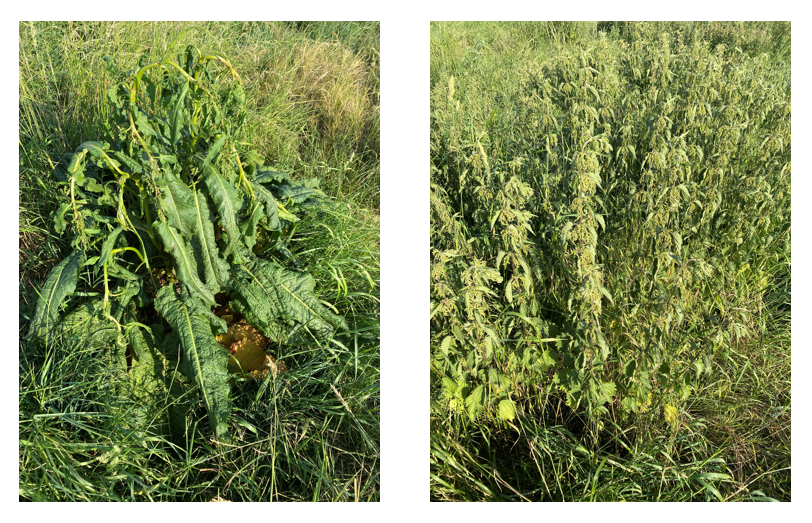
|
Dock and nettle suffering from heat stress and lack of moisture.
|
Selecting the right product for the right situation
|
Download the Corteva Forage App for:
- Choosing the correct product for your target weeds
- Viewings and downloading a product label
- Checking off-label weed control information
- Creating a spray application record
|

|
Download here or by searching 'Corteva Forage' in your app store.
|
|
|
Doxstar® Pro has been specifically formulated to give lasting control of docks. However, the product works best if weeds are healthy and actively growing. Weeds that are damaged by insects such as Green Dock Beetle, have a smaller surface area for product uptake and translocation. This means that less active gets down into the roots.
Where you have a bad infestation of dock beetle, the best way to treat the docks is to top them, wait until sufficient regrowth has occurred and docks are 150-250mm across or high (about the size of a dinner plate) and then spray with Doxstar Pro.
|
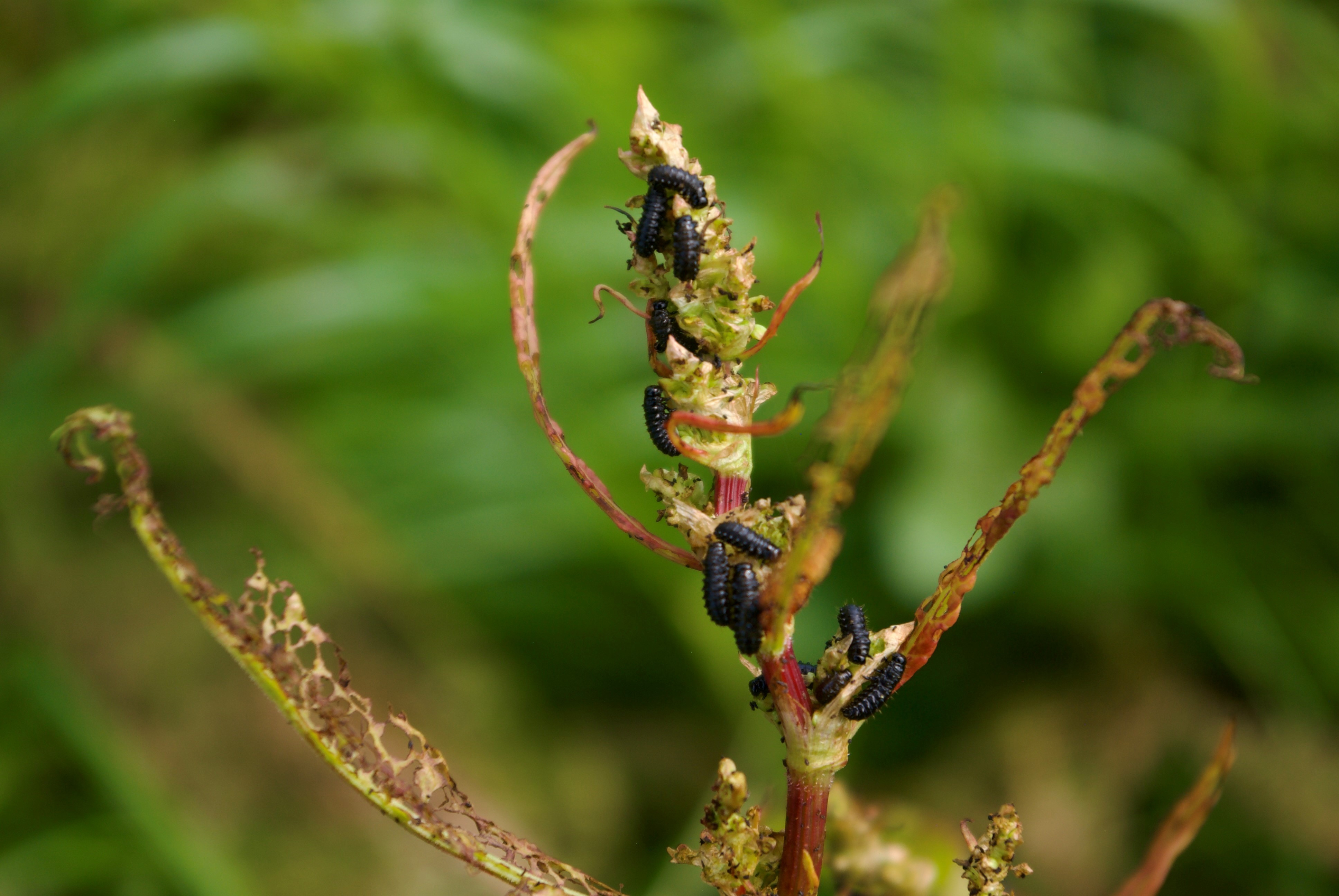
|
Thistle control and why it helps contain Orf
|
Grassland management and the control of weeds, particularly thistles, is one way to prevent the spread of orf through your livestock. When grazing close to thistles, the spines can traumatise the skin allowing the orf virus to infect your sheep.
Where thistles dominate, spray with Thistlex® using a tractor mounted or self-propelled sprayer. If the area infested by the thistles is less than 5%, spot treatment with Grazon® Spot or Grazon® Pro will be more cost effective. All these products will control all species of thistles including spear, creeping, and marsh. Tackling them now reduces the number of new plants that will germinate from seed this year.
|
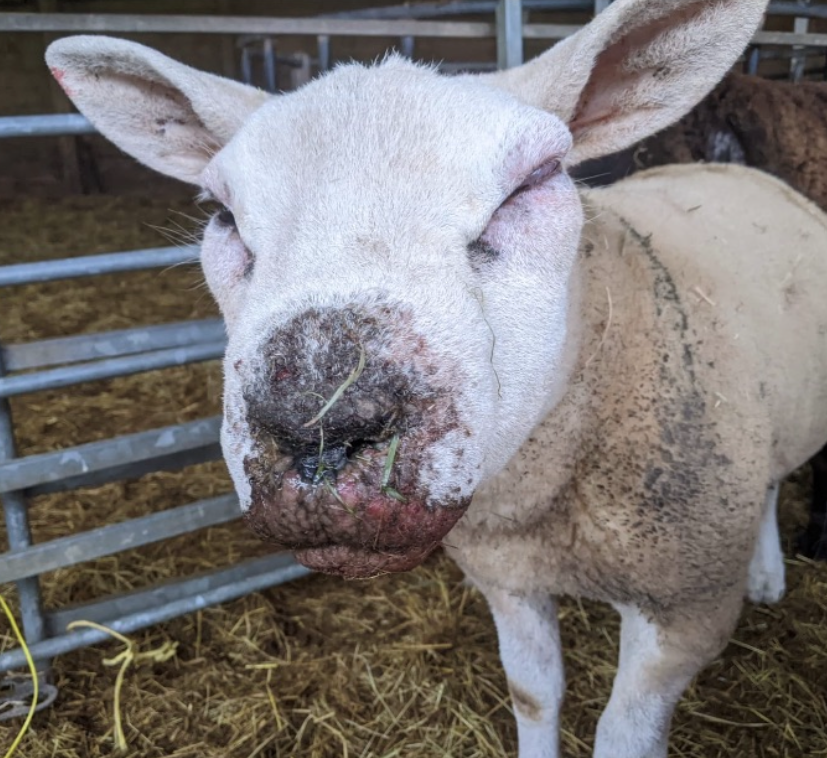
|
|
|
There are many species of thistle, below we detail the main features of 6 species.
- Creeping thistle: spreads primarily by vegetative growth of roots, root fragments can remain viable for several years, its flower heads are purple/pink in colour.
- Spear thistle: has a large tap root (up to 70cm long), grows from seed, and seed dispersed by wind can travel up to 30m. Flower heads consist of pink florets and a ball of spiny bracts.
- Marsh thistle: the whole stem is spiny, flowers are usually purple, plants can grow up to 1.2m tall.
- Meadow thistle: a slender plant, it can grow up to 80cm tall, its stem is hairy, and the plant only produces one pink/purple flower head.
- Musk thistle: plants can grow up to 1.5m tall, the pink flower heads tend to overhang and are surrounded by spiny bracts.
- Slender thistle: a tall, slender plant with small pinkish flower heads, spiny wings cover the whole of the stem.
Treat when thistles are at the vegetative ‘rosette’ stage, 150mm-250mm across or high, use the spray timing indicator in the Corteva Forage App to identify the ideal growth stage. Herbicides containing either aminopyralid or clopyralid will give control of all thistle species. When thistles are the main target, use Thistlex®. If other weeds are also present, use Forefront® T, Pas®·Tor® Agronomy Pack, or if using a knapsack Grazon® Pro or Grazon® Spot.
|
|
|
Leystar® is a selective herbicide controlling a wide spectrum of broad-leaved weeds in
forage maize.
Benefits of Leystar:
- Controls key weeds such as thistles, seedling docks, chickweed, and mayweed
- Comes in a handy pack which treats 2 ha / 5 acres at 1.0 L/ha
- Is rainfast in 2 hours
Find the weed lists and the Technical Information Sheet for Leystar on the Corteva Forage App.
|
Ragwort control, the importance of application timing
|
If you have ragwort, target smaller plants showing active growth whilst they are still at the rosette stage, up to 200mm across and spray before the ragwort moves into stem extension. If the stems have already extended, top and spray the regrowth. Treated at the rosette stage, ragwort will senesce more quickly, enabling stock return sooner.
Grazing animals should be excluded from treated areas until any ragwort has completely recovered or rotted down and there is no visible sign of the dead weed. Below is the ideal growth stage to target.
|
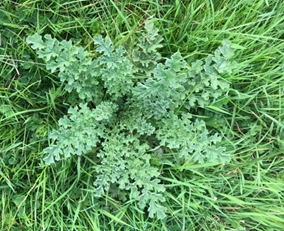
|
Weed control after drought conditions
|
Recent showers may have been enough to get grass and weeds growing but if not, and grass is under stress as a consequence of hot and dry weather, then a herbicide application could lead to scorching of the grass. Many weeds like docks, thistles, and nettles race through their development stage and advance rapidly to seeding.
Herbicide does not translocate as well in these situations. It is better to top these weeds and delay the application until moisture returns, there is good weed regrowth, and grass is not under stress.
|
|
|
Find out ways of earning CPD points below with Corteva below, you can also find out more on our Learn and earn CPD points page by clicking here.
|
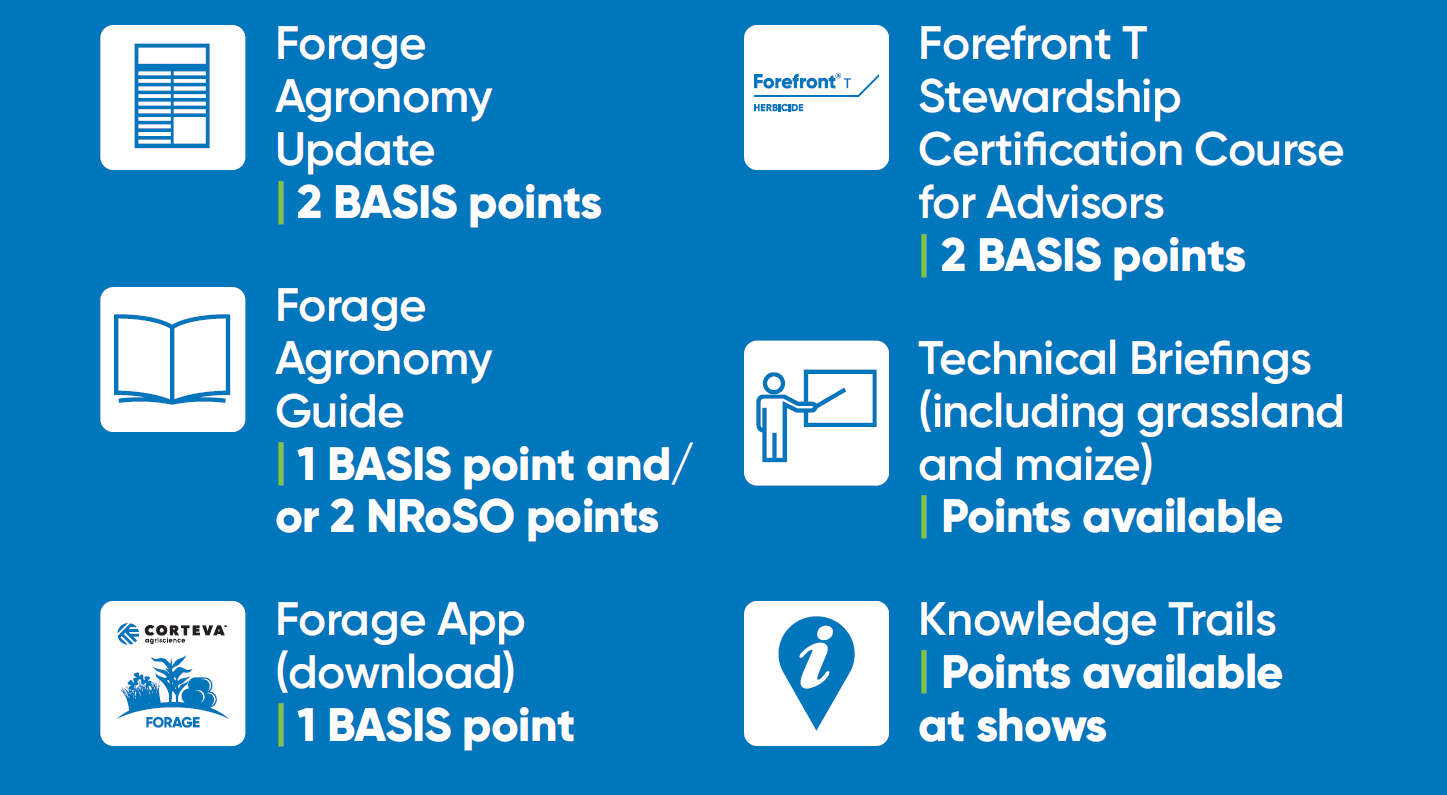
|
Grazon Spot - powerful precision weed control
|
The power of Grazon® Spot, ideal for those treating smaller areas.
- The same formulation as Grazon® Pro but in a smaller 0.5 litre bottle, ideal for those treating smaller areas.
- Use at the same rate, 60ml per 10 litres of water, the 0.5 litre pack will provide enough chemical for 8 knapsack mixes.
- Ideal for those less frequent users.
|
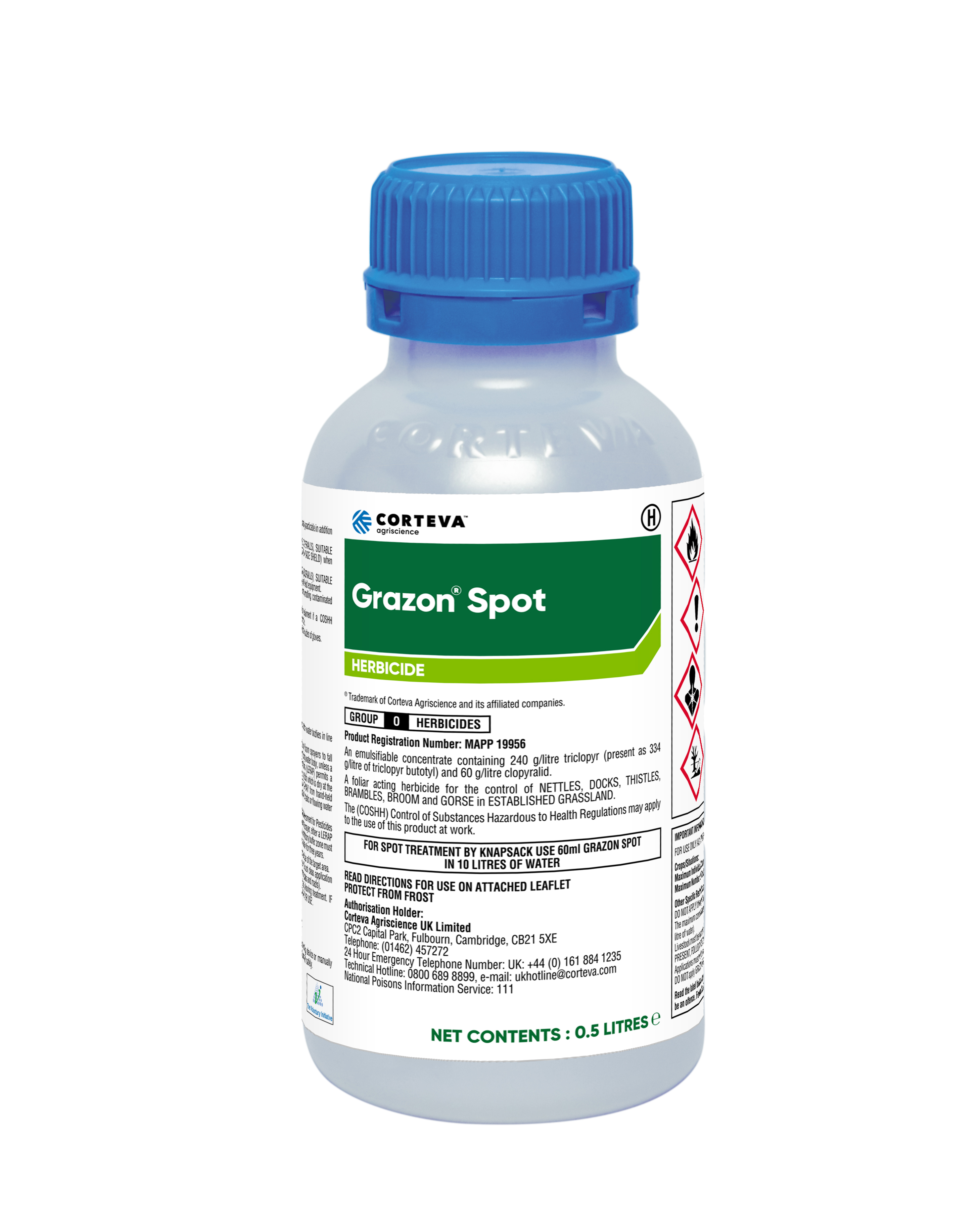
|
|
|
Pioneer® 11A44 contains a proprietary strain of Lactobacilus buchneri designed to:
- Significantly reduce aerobic spoilage
- Reduce yeast and mould populations to just 0.1% of untreated control silages
- Maintain aerobic stability in maize and cereal wholecrop silage for longer than silages treated with 5 litres of Proprionic acids
- Provide biological product that is easier and safer to use than acids or acid salts
When to use 11A44:
- Grass silage 25 - 45% dry matter
- Fermented wholecrop cereal silage 25% - 45% dry matter
- Maize silage 25% - 45% dry matter
- Crimped maize and cereal gains <65% dry matter
Available as a water-soluble product in packaging suitable for use in tank mixes or with the Pioneer Appli-Pro® systems for easy and convenient application.
|
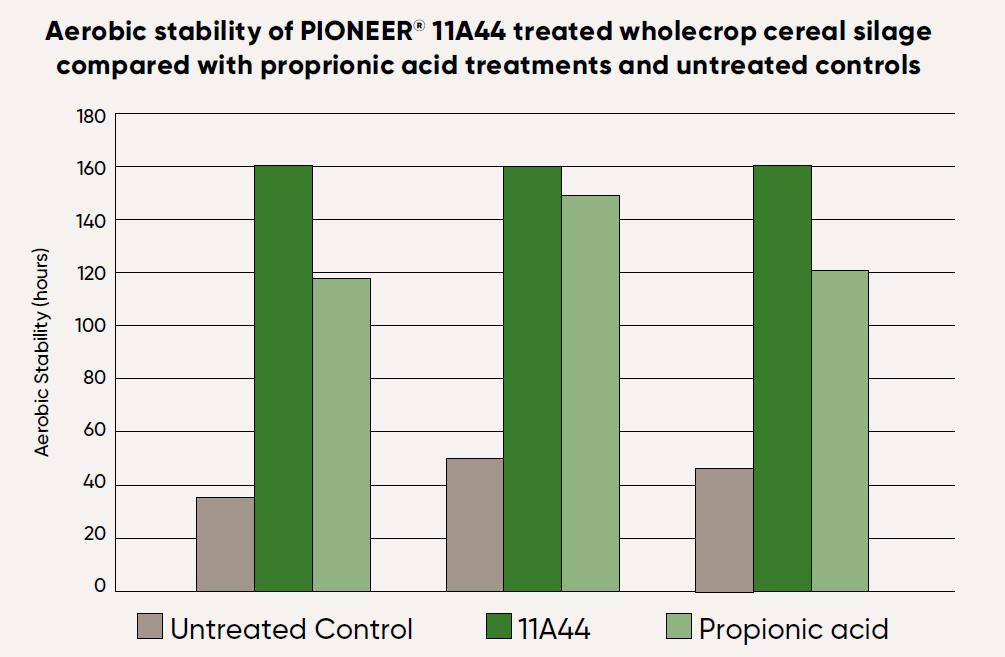
|
Maximising your maize silage
|
Maximising crop growth and preserving the highest possible quality forage during the ensiling process is a key aim for any silage maker every year. Successful, efficient ensiling generates a higher dry matter tonnage in the clamp and improves ultimate feed intake. The soluble carbohydrates, or sugars, present in maize at the time of harvesting are invariably more than enough to ensure a satisfactory production of lactic acid via fermentation after sealing. However, the very same sugars can drive the growth of yeasts and moulds where sufficient oxygen is present to facilitate their growth. The dry matter losses due to excessive mould growth can be as high as 30% in extreme cases.
To guard against high dry matter losses from aerobic spoilage, clamps should be well compacted and carefully sealed to exclude as much air as possible. Unfortunately, often some oxygen is still able to permeate the silage and facilitate the growth of spoilage organisms. It should be considered also that some silages have a poor hygiene status at the point of ensiling and may already be infested with elevated levels of yeasts and moulds. This can especially be the case in maize if harvest is late and poor weather conditions allow the multiplication of spoilage organisms on the plants in the field.
The range of Pioneer® Brand Silage Inoculants include various products that can improve the efficiency of the initial lactic fermentation, reduce aerobic losses and improve silage feed value in different silages. In the case of maize, Pioneer Brand 11A44 is a very popular choice to address silage aerobic instability. 11C33 Rapid React is often chosen by maize producers who wish to ensure the fastest and most efficient lactic fermentation and then also the least possible level of aerobic spoilage. 11CFT is another unique product that has an effect similar to 11C33 RR but also generates an enzyme, ferulate esterase, that leads to improved fibre digestibility – a powerful product where the highest possible silage quality is desired.
Pioneer Brand 11CH4 is a product especially developed for applying to any higher dry matter silage that is intended for the production of biogas. It maximises aerobic stability whilst at the same time ensuring the highest possible product of methane via the production of acetic acid, a precursor of biogas production in anaerobic digestion.
|
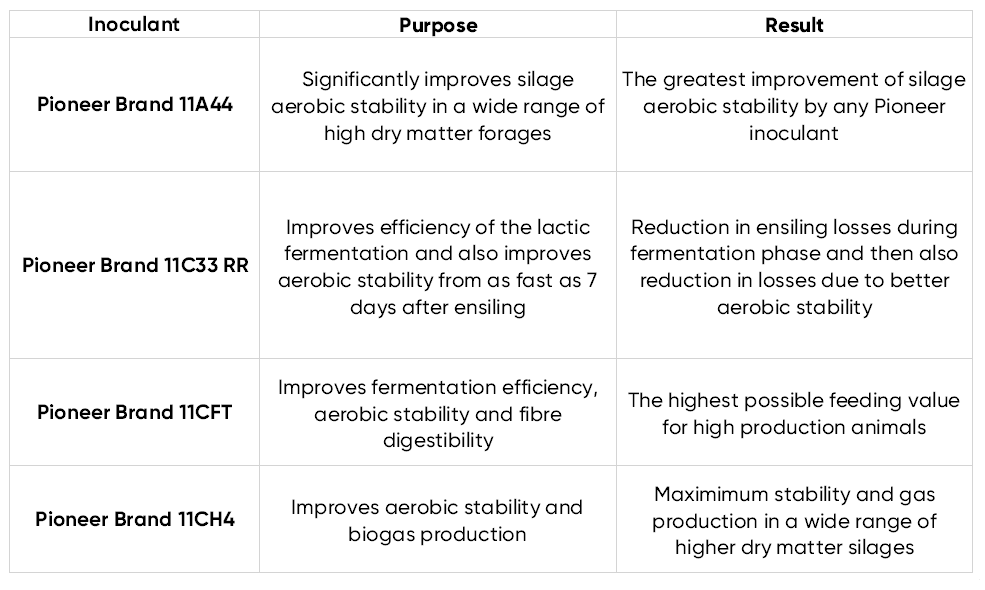
|
|
|
Q: What does the date on the neck of Corteva grassland herbicide bottles mean?
A: This is the manufacture date.
A: It delivers susceptible level of control of chickweed, dandelion and cranesbill.
Q: Which product controls Burdock?
A: Doxstar Pro will provide moderate control of Burdock (Arctium minus) as well as nettle and yarrow.
Q: Have you got a simple decision tree which identifies the best selective herbicide to use for a range of grassland weed problems?
A: Yes – It is available in the Corteva Forage App. Click on weed control, select “Grassland Herbicide Decision Map.”
Q: What PPE must I wear when spraying Corteva herbicides that have an approval for knapsack application?
A: You must wear a coverall, gloves and boots when spraying. When handling concentrate, you must also wear face protection (a face shield).
|
|
|
2 BASIS points will be awarded to those subscribing to the Forage Agronomy Update. Sign up to the e-newsletter by clicking here to receive BASIS points.
|
|
|
|
|
|
Use plant protection products safely. Always read the label and product information before use. For further information including warning phrases and symbols refer to label. ®™ Trademarks Corteva Agriscience Limited and its affiliated companies. All other brand names are trademarks of other manufacturers for which proprietary rights may exist. All manufacturers trade names and trademarks are duly acknowledged. © 2023 Corteva. Doxstar Pro contains fluroxypyr and triclopyr. Envy contains fluroxypyr and florasulam. Forefront T contains aminopyralid and triclopyr. Grazon Pro/Spot contains clopyralid and triclopyr. Leystar contains fluroxypyr, clopyralid and florasulam. Pas·Tor contains clopyralid, fluroxypyr and triclopyr. Thistlex contains clopyralid and triclopyr.
|
|
|
|
|